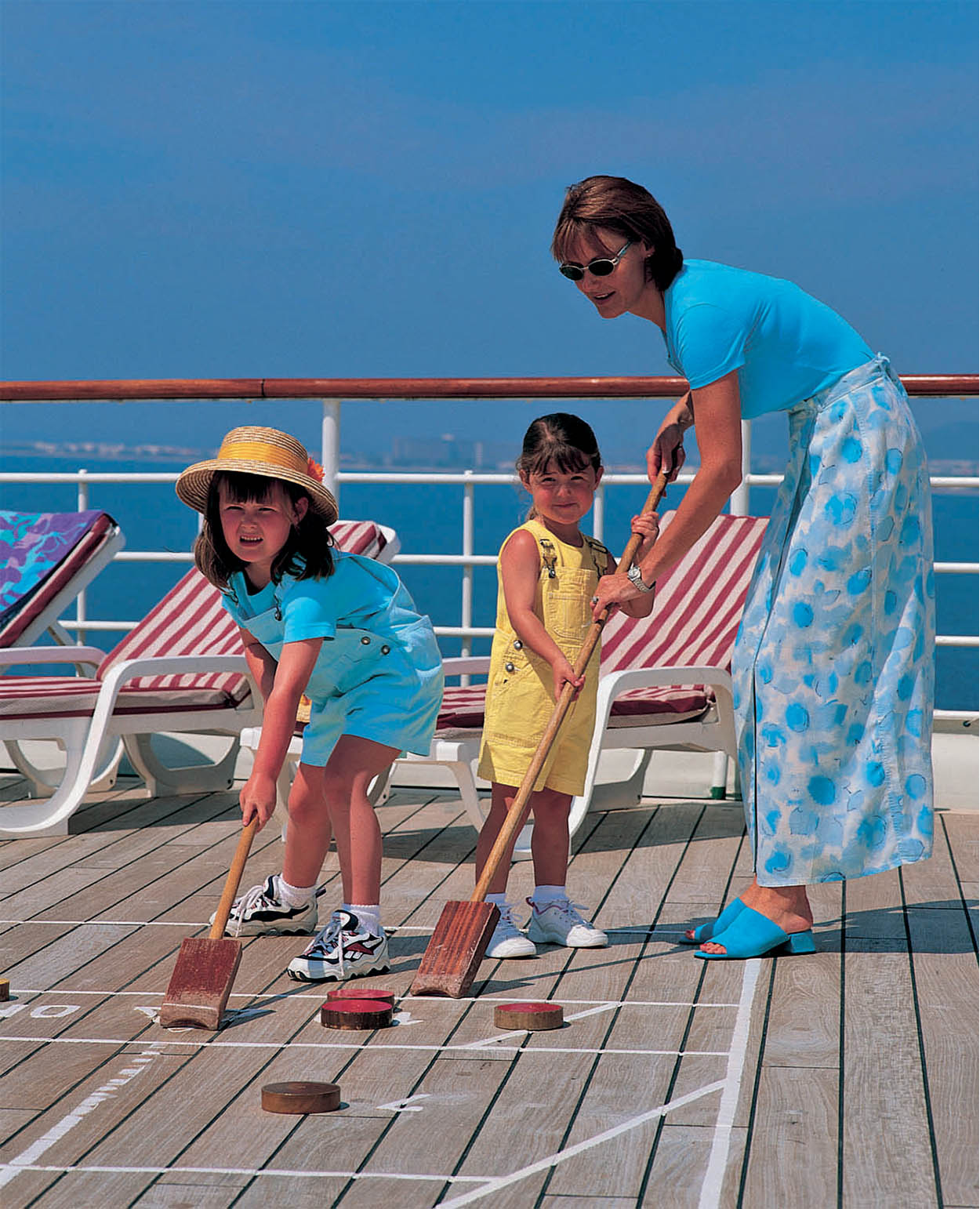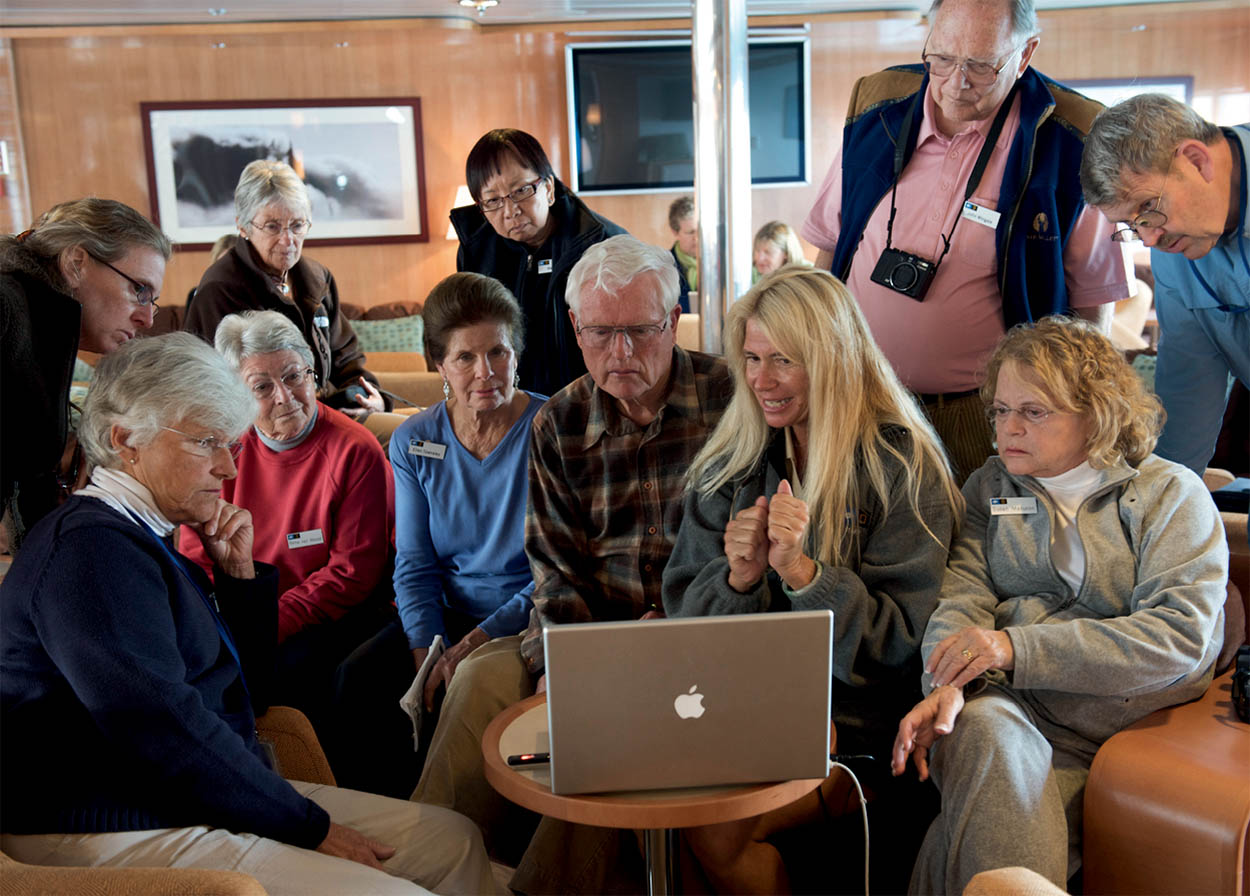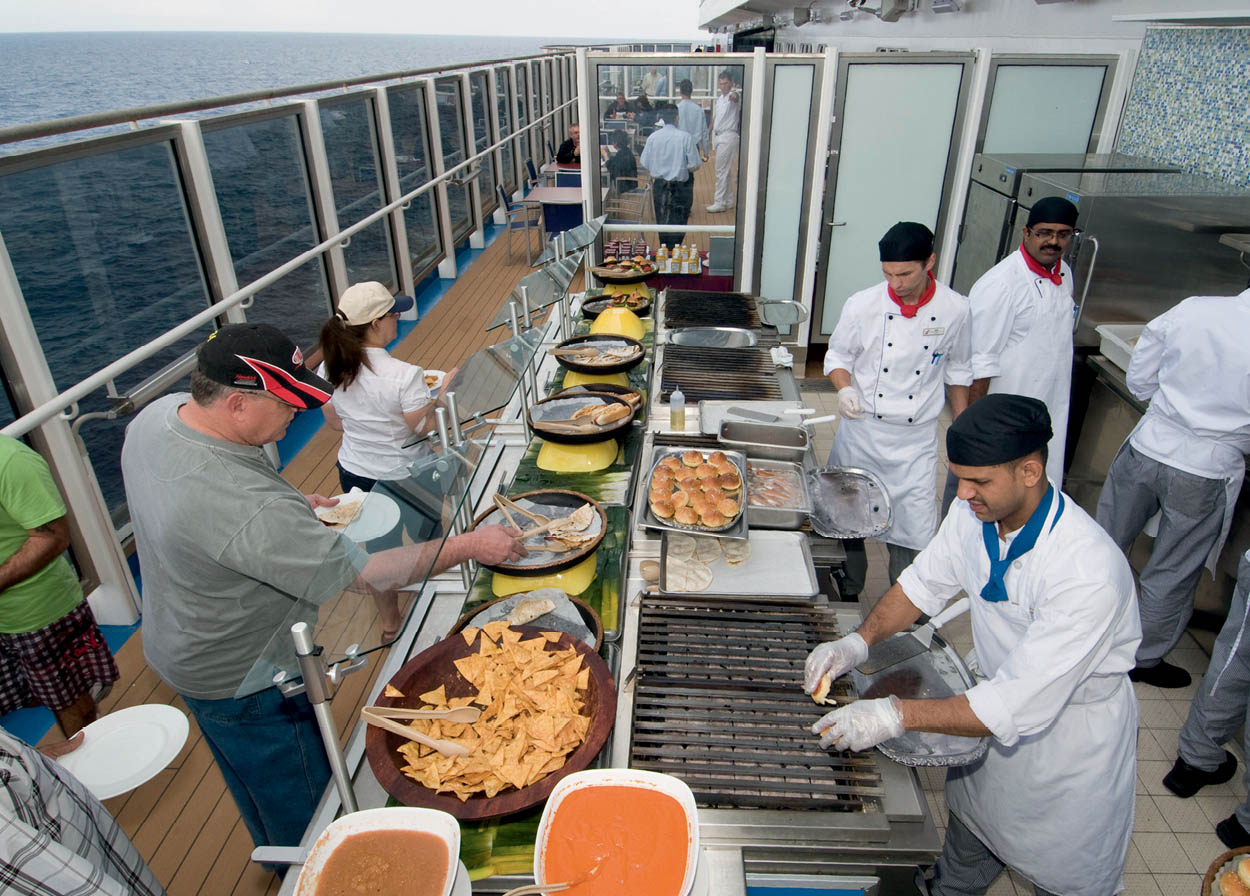What’s the difference between large and small ships? Are new ships better than older ones? Here is the latest to make sure you select the right ship to sail away.
Which ship? There’s something to suit virtually all tastes, so take into account your own personality and tastes. Ships are measured (not weighed) in gross tonnage (gt) and come in four principal size categories:
Large resort ships: for 1,750–6,500 passengers
(typically measure 50,000–220,000 gross tonnage).
Think: double-decker bus (with some seats that are better than others).
Mid-size ships: for 750–1,750 passengers
(typically 25,000–50,000 gross tonnage).
Think: long-distance coach (comfortable seats).
Small ships: for 250–750 passengers
(typically 5,000–25,000 gross tonnage).
Think: mini-van (some are executive types; some are more mainstream).
Boutique ships: for up to 250 passengers
(typically 1,000–5,000 gross tonnage).
Think: private car (luxury, mid-range, or compact).

Costa Classica in Norway’s Gieranger Fjord.
Costa
Space
For an idea of the amount of the space around you (I call it the ‘crowd factor’), check the Passenger Space Ratio given for each ship in the listings section (gross tonnage divided by number of passengers).
Passenger Space Ratio:
50 and above is outstanding
30 to 50 is very spacious
20 to 30 is not very spacious
10 to 20 is high density
10 or below is extremely cramped

Snacking at sea aboard Celebrity Constellation.
Celebrity Cruises/Steve Beaudet
Large resort ships (1,750–6,500 passengers)
Choose a large resort ship if you like being with lots of other people in a bustling big-city environment, you enjoy being sociable, and you want to have plenty of entertainment and dining (well, eating) options. These balcony-rich ships provide a well-packaged standard or premium vacation, usually in a seven-day cruise. It is the interaction between passengers and crew that determines the quality of the onboard experience.
Large resort ships have extensive facilities and programs for families with children of all ages. But if you meet someone on the first day and want to see them again, make sure you appoint a very specific place and time (apart from the size of the ship, they may be at a different meal seating). These ships have a highly structured array of activities and passenger participation events each day, together with large entertainment venues, and the most lavish production shows at sea.
It is the standard of service, entertainment, lecture programs, level of communication, and finesse in dining services that really can move these ships into high rating categories, but they must be exceptional to do so. Choose higher-priced suite accommodation and the service improves. In other words: pay more, get more.
Large resort ships are highly programmed. It is difficult, for example, to go swimming in the late evening – the decks are cleaned and pools are often netted over by 6pm. Having champagne delivered to outdoor hot tubs late at night is virtually impossible. They have lost the flexibility for which cruise ships were once known, becoming victims of company ‘policy’ and insurance regulations. There can be a feeling of ‘conveyor-belt’ cruising, with cultural offerings scarcely extending beyond rap, rock, alcohol, and gambling.

Older ships retain traditional games such as shuffleboard.
P&O Cruises
Mid-size ships (750–1,750 passengers)
These suit the smaller ports of the Aegean and Mediterranean, and are more maneuverable than larger ships. Several operate around-the-world cruises and other long-distance itineraries to exotic destinations not really feasible aboard many small ships or large resort ships.
There is a big difference in the amount of space available. Accommodation varies from large ‘penthouse suites’ complete with butler service to tiny interior (no-view) cabins. These ships will generally be more stable at sea than ‘small ships,’ due to their increased size and draft. They provide more facilities, more entertainment, and more dining options. There is some entertainment and more structured activities than aboard small ships, but less than aboard large resort ships.
Smll ships (250–750 passengers) and Boutique ships (50–250 passengers)
Choose a small or boutique ship for an intimate cruise experience and a small number of passengers. Some of the world’s most exclusive cruise ships belong in this group – but so do most of the coastal vessels with basic, unpretentious amenities, sail-cruise ships, and the expedition-style cruise vessels that take passengers to see nature.

An illustrated nature talk aboard National Geographic Explorer.
Lindblad/Sisse Brimberg & Cotton Coulson
Select this size of ship if you don’t need much entertainment, large resort ship facilities, gambling casinos, several restaurants, and if you don’t like to wait in lines for anything. If you want to swim in the late evening, or have champagne in the hot tub at midnight, it’s easier aboard boutique or small ships than aboard larger ships, where more rigid programs lead to inflexible, passenger-unfriendly thinking.

Casual lunch aboard a large resort ship.
Carnival/Andy Newman
What about age?
A ship built before 1990 is considered old. However, its quality depends on the level of maintenance it has received, and whether it has operated on short or longer cruises – short cruises get more passenger throughput and wear and tear. Many passengers like older ships, as they tend to have fewer synthetic materials in their interior decor. It’s inevitable that most of the older tonnage won’t match the latest high-tech hardware, but today’s ships aren’t built with the same loving care as in the past.
Most cruise advertising you’ll see revolves around the newer, larger ships, but some older ships have much to offer if you don’t want the latest trendy facilities and city high street feel. Indeed, some of the older, smaller ships have adequate facilities, tend to have more character, and provide a more relaxing vacation experience than the go-go-go contemporary ships, where you’re just one of a large crowd.
The crew
You can estimate the standard of service by looking at the crew-to-passenger ratio (provided in the ship profiles in this book). The best service levels are aboard ships that have a ratio of one crew member to every two passengers, or higher. The best ships in the world, from the point of view of crew living and working conditions, also tend to be the most expensive ones – the adage ‘you get what you pay for’ tends to be all too true.
Most ships, with one or two exceptions, have multinational crews. Indeed, the crew mixture can resemble a miniature United Nations. However, if the crew is happy, the ship will be happy, too; this will communicate itself to passengers.
Newer ships (post-1990): Advantages
Newer ships typically incorporate the latest in high-tech electronic equipment and in advanced ship design and construction; they also meet the latest safety and operating standards.
Typically, newer ships have been built with ‘pod’ propulsion systems, which have replaced conventional propeller shafts, propellers, and rudders, with the result that there is little or no vibration. This type of propulsion system is also more fuel efficient.
Although the trade-off is debatable, more recent ships have been built with more interior public rooms, and less exterior promenade deck. This is great for traveling to destinations where the weather is less predictable, but not so great for sunbathing.
More standardized cabin layouts, with fewer categories to cause confusion when booking. These cabins also have better plumbing and air-conditioning systems.
Newer ships have design advantages as well, including: a shallower draft, which makes it easier for them to enter and leave ports; bow and stern thrusters, so they seldom require tug assistance in many ports, which reduces operating costs; and many have the latest submersible lifeboats, creating a safer operating environment.
Newer ships (post-1990): Disadvantages
Unfortunately, these newer ships don’t ‘take the weather’ as well as older ships – sailing across the North Atlantic in November on one of the new large resort ships can be unforgettable. Because of their shallow draft, these ships roll, even when there’s the slightest puff of wind. Recent design changes also mean that newer ships have thin hulls and do not withstand the bangs and dents as well as older, more heavily plated vessels.
Newer ships tend to have smaller (although more standardized) cabins, which can mean narrow, short beds. The interior decor is made mostly from synthetic materials, due to stringent regulations, and could cause problems for passengers sensitive to such materials. The cabin windows are usually completely sealed, instead of portholes that can be opened. Most egregiously, newer ships almost always have toilets of the powerful vacuum suction, which I like to call the ‘barking dog’ type.
Pre-1990 ships: Advantages
Older ships have strong, plated hulls that can withstand tremendously hard wear and tear; they ‘take the weather’ well. They have deep drafts that help them to achieve a smooth ride in the open seas.
The interiors of older ships are usually built from traditional materials such as wood and brass, with less use of synthetic fibers, so are less likely to affect anyone with allergies. The cabins tend to be larger, with long, wide beds/berths, because passengers needed more space in the days when voyages were much longer. Also, toilets of an older generation are of the ‘gentle flush’ variety instead of today’s vacuum toilets.
Pre-1990 ships: Disadvantages
Older ships are not very fuel-efficient and are, therefore, more expensive to operate than new ships. Because of their construction, they might have a tough time complying with current international fire, safety, and environmental regulations. Older ships need a larger crew, because of the more awkward, labor-intensive layouts. As well, ships built before 1990 typically have a deep draft, which makes for a smooth ride, but means they may need tugs to negotiate ports and tight berths.